Spotted Headstander – Chilodus punctatus Fish Profile: A Stunning and Graceful Addition to Your South American Tetra Collection, Ideal for Beginners Seeking Beautiful Tropical Fish, Perfect for Community Tanks
£20.49 Original price was: £20.49.£17.42Current price is: £17.42.
Welcome the stunning Spotted Headstander, Chilodus punctatus, into your aquarium! These graceful tropical fish showcase elegant upside-down swimming, making them perfect for community tanks. Ideal for beginners, they thrive in well-planted environments with peaceful companions.
994 in stock
Species Introduction
The Spotted Headstander, scientifically known as Chilodus punctatus, is a captivating species belonging to the Characidae family. Originating from the lush freshwater rivers and streams of South America, particularly in the Amazon Basin, these fish are renowned for their unique swimming behavior and striking appearance. With a maximum length of approximately 4 cm, they are ideal for smaller community tanks, making them perfect companions for both novice and experienced aquarists alike. Their natural habitat consists of slow-moving waters rich in aquatic plants, where they thrive among dense vegetation, providing them with ample hiding spots and foraging opportunities. As a peaceful species, the Spotted Headstander is an excellent addition to a community tank, where they can exhibit their graceful swimming patterns and social interactions with other fish.
Care Requirements Dashboard
✓ Care Level: Easy
Tank Size: 20 gallons minimum
Water Temperature: 22-28°C (72-82°F)
pH Level: 6.0-7.5
Water Hardness: 5-15 dGH
Natural Behavior & Temperament
The Spotted Headstander is a fascinating fish known for its unique swimming behavior, often seen swimming upside down, which is where its name originates. This behavior is not only captivating to observe but also serves a purpose in their natural habitat, allowing them to forage for food among the surface of the water. In terms of temperament, these fish are peaceful and social, making them ideal candidates for community tanks. They thrive in schools of at least six individuals, which helps to reduce stress and promote natural behaviors. When kept in appropriate groups, Spotted Headstanders exhibit a harmonious dynamic, often seen interacting with each other and other species in the tank. Their calm demeanor makes them compatible with a wide variety of community fish, provided that tank mates are similarly peaceful.
Tank Setup Guide
Creating an optimal environment for your Spotted Headstanders involves replicating their natural habitat as closely as possible. A tank size of at least 20 gallons is recommended to provide ample swimming space and to accommodate a small school of these fish. The substrate should be soft and sandy, allowing them to forage naturally without injury. Incorporating live plants, such as Java Fern or Anubias, will not only enhance the aesthetic appeal of your aquarium but also provide hiding spots and reduce stress for the fish. Additionally, driftwood and rock formations can create territories and shelter, mimicking their natural environment. Adequate filtration is essential to maintain water quality, and a gentle water flow is preferred to replicate their natural habitat. Lighting should be moderate, as excessive brightness can cause stress, while dim lighting can promote the growth of beneficial algae and provide a comfortable environment for your fish friends.
Water Quality Management
⚠ Important Water Parameter Notice
Maintaining optimal water quality is crucial for the health and well-being of your Spotted Headstanders. The ideal water temperature range is between 22-28°C (72-82°F), with a pH level of 6.0-7.5. Regular water changes of 25-30% every two weeks will help to maintain stable water conditions and remove harmful toxins. Additionally, monitoring water hardness is essential, with a range of 5-15 dGH being optimal. Utilizing a high-quality water testing kit will allow you to keep track of these parameters and ensure a healthy environment for your aquatic companions. It is also advisable to use a reliable filtration system to keep the water clean and oxygenated, as Spotted Headstanders thrive in well-oxygenated environments.
Feeding & Nutrition
Feeding your Spotted Headstanders a balanced diet is essential for their growth and overall health. In their natural habitat, they primarily feed on small insects, crustaceans, and plant matter. In captivity, a varied diet consisting of high-quality flake food, micro-pellets, and occasional live or frozen foods, such as brine shrimp or daphnia, is recommended. Feeding should occur once or twice a day, with only what they can consume in a few minutes to prevent overfeeding and maintain water quality. It’s also beneficial to include vegetable matter in their diet, such as blanched spinach or zucchini, to ensure they receive a well-rounded nutritional profile. Observing their feeding habits will give you insight into their preferences and help you adjust their diet accordingly.
Compatibility Guide
✓ Peaceful Community Fish
Spotted Headstanders are known for their peaceful nature, making them excellent additions to community tanks. Ideal tank mates include other small, peaceful fish such as tetras, rasboras, and small catfish. Avoid aggressive species or larger fish that may see them as prey. A well-planned community tank should include various species that share similar water parameter requirements, ensuring a harmonious environment. It is essential to introduce new fish gradually and observe their interactions to ensure compatibility. Ideally, keeping them in groups of six or more will help reduce stress and promote natural schooling behavior.
Health & Wellness
Monitoring the health of your Spotted Headstanders is crucial for their longevity and well-being. Common health issues include ich, fin rot, and stress-related diseases. Regular observation of their behavior and physical appearance is essential; healthy fish will exhibit vibrant colors and active swimming patterns. Signs of illness may include lethargy, loss of appetite, or abnormal swimming behavior. Maintaining optimal water quality, providing a balanced diet, and ensuring a stress-free environment are key factors in preventing health issues. In the event of illness, it is advisable to quarantine affected fish and consult a knowledgeable aquarist or veterinarian for treatment options.
Breeding Information
Breeding Spotted Headstanders can be a rewarding experience for aquarists. They are egg layers and typically spawn in groups. To encourage breeding, it is essential to provide a separate breeding tank with soft, slightly acidic water and plenty of fine-leaved plants for the eggs to adhere to. The breeding pair will engage in courtship displays, and once spawning occurs, the parents should be removed to prevent them from eating the eggs. The eggs will hatch within 24-48 hours, and the fry should be fed infusoria or finely crushed flakes until they are large enough to consume larger foods. Careful monitoring of water quality during this time is crucial to ensure the health of the fry.
Acclimation Process
Introducing new Spotted Headstanders to your aquarium requires a careful acclimation process to minimize stress. Begin by floating the sealed bag containing the fish in the aquarium for about 15-20 minutes to equalize the temperature. After this, gradually add small amounts of tank water to the bag every 5 minutes until the bag is full. This process helps the fish adjust to the water parameters of their new home. Once acclimated, gently release the fish into the tank using a net to avoid adding any transport water that may contain harmful substances. Monitoring their behavior for the first few days after introduction will help ensure they are settling in well.
Long-term Care
Spotted Headstanders can live for several years with proper care, making them a delightful addition to your aquarium. As they grow, it is essential to monitor their size and adjust tank conditions accordingly. Regular maintenance, including water changes and filter cleaning, will help maintain a healthy environment. Observing their growth and behavior will provide insights into their needs and preferences, allowing you to create an optimal habitat. Additionally, maintaining a varied diet and monitoring their health will contribute to their longevity and well-being. Engaging with your fish friends regularly will also enhance their comfort and reduce stress.
Natural Habitat Recreation
To create a biotope that reflects the natural habitat of Spotted Headstanders, consider incorporating elements that mimic their native environment. This includes using soft, sandy substrates, as well as a variety of live plants that provide shelter and foraging opportunities. Adding driftwood and rocks can create hiding spots and territories, promoting natural behaviors. The use of natural materials will enhance the aesthetic appeal of your aquarium while providing a comfortable environment for your fish. Additionally, maintaining stable water parameters that reflect those of their natural habitat will contribute to their overall health and happiness.
Seasonal Care Adjustments
As seasons change, it is important to adjust your care routine to accommodate the needs of your Spotted Headstanders. During warmer months, ensure that the water temperature remains within the optimal range, as higher temperatures can lead to stress and health issues. Conversely, during colder months, consider using a heater to maintain a stable temperature. Additionally, monitor water quality more frequently during seasonal changes, as fluctuations can affect the health of your fish. Adjusting lighting schedules to mimic natural day/night cycles will also promote healthy behaviors and well-being.
Expert Tips
For those looking to enhance their experience with Spotted Headstanders, consider these expert tips. First, maintaining a well-planted aquarium will not only provide hiding spots but also improve water quality through natural filtration. Second, consider adding a few floating plants to diffuse light and create shaded areas, which can help reduce stress. Lastly, regular interaction with your fish friends will help them become accustomed to your presence, making them more comfortable and active in the tank. Engaging in regular observation will also allow you to catch any potential health issues early on.
Troubleshooting
In the event of common issues with Spotted Headstanders, it is essential to remain calm and address the situation promptly. If you notice signs of stress or illness, such as lethargy or loss of appetite, first check water parameters to ensure they are within the optimal range. If water quality is poor, perform a partial water change and monitor the fish closely. Additionally, ensure that tank mates are compatible and not causing undue stress. If health issues persist, consider consulting with an experienced aquarist or veterinarian for further guidance on treatment options.
Scientific Background
The Spotted Headstander, Chilodus punctatus, is part of the Characidae family, which is known for its diverse range of freshwater fish species. This species has been studied for its unique behaviors and adaptations to its environment. Research indicates that their upside-down swimming is a behavioral adaptation that allows them to forage effectively for food. Conservation efforts are essential to protect their natural habitats, as deforestation and pollution pose significant threats to their populations in the wild. Understanding the scientific background of Spotted Headstanders can enhance your appreciation of these beautiful creatures and their role in the aquatic ecosystem.
Advanced Care Techniques
For aquarists looking to take their care of Spotted Headstanders to the next level, consider implementing advanced techniques such as breeding programs or specialized feeding regimens. Breeding these fish can be a rewarding challenge, requiring specific water conditions and diet adjustments to encourage spawning. Additionally, experimenting with different types of food, including high-protein options and vegetable matter, can enhance their coloration and overall health. Engaging with the aquarist community for shared experiences and advice can also provide valuable insights into advanced care techniques for your Spotted Headstanders.
Water Quality Parameters
Optimal Range
24-27°C
6.5-7.5
0 ppm
Caution Zone
22-24°C or 27-29°C
6.0-6.5 or 7.5-8.0
0.25-0.5 ppm
Danger Zone
<22°C or >29°C
<6.0 or >8.0
>0.5 ppm
Monitoring Tip: Test water parameters weekly and perform regular water changes to maintain optimal conditions for your aquatic friends!
Frequently Asked Questions
Q: What tank size is required for Spotted Headstander?
For Spotted Headstanders (Chilodus punctatus), a minimum tank size of 100 litres is recommended. These fish are active swimmers and thrive in spacious environments. A larger tank not only provides ample swimming space but also helps maintain stable water parameters, which is crucial for their health. Ensure the tank is well-planted with open swimming areas, as they enjoy darting between plants. Providing hiding spots with driftwood or caves can also help reduce stress levels. Remember, the more space you can offer, the happier and healthier your aquatic companions will be.
✓ Expert Tip
Consider a larger tank if you plan to keep a school of Spotted Headstanders, as they thrive in groups of six or more.
Q: What water parameters do Spotted Headstanders require?
Spotted Headstanders prefer slightly acidic to neutral water conditions, with a pH range of 6.0 to 7.5. The water temperature should be maintained between 24°C to 28°C, ensuring a stable environment. Regular water changes of 20% weekly are vital to maintain optimal water quality, as these fish are sensitive to poor conditions. Additionally, a soft water hardness of 5 to 15 dGH is ideal. Monitoring these parameters with a reliable test kit will help you keep your aquatic companions healthy and vibrant.
✓ Expert Tip
Use a high-quality aquarium heater and filtration system to maintain stable temperature and water parameters.
Q: How often should I feed Spotted Headstanders?
Feed your Spotted Headstanders once or twice daily, providing only what they can consume within a few minutes. A varied diet is essential for their health; consider high-quality flake food supplemented with frozen or live foods such as brine shrimp and daphnia. This not only ensures balanced nutrition but also mimics their natural feeding habits. Overfeeding can lead to water quality issues, so it’s crucial to monitor their feeding habits closely and adjust portions accordingly.
✓ Expert Tip
Introduce new foods gradually to avoid digestive issues and encourage dietary diversity.
Q: What are the best tank mates for Spotted Headstanders?
Spotted Headstanders are generally peaceful and can coexist with various community fish. Ideal tank mates include other tetras, rasboras, and medium-sized catfish. Avoid aggressive species or those that may nip at their fins. Keeping them in groups of six or more can help reduce stress and promote natural behaviours. Always observe interactions closely when introducing new fish to ensure a harmonious environment.
✓ Expert Tip
Consider the size and temperament of potential tank mates, ensuring compatibility with your Spotted Headstanders.
Q: How do I properly acclimatise Spotted Headstanders to my aquarium?
Acclimatising Spotted Headstanders is crucial for their health. Begin by floating the sealed bag containing the fish in your aquarium for about 15-20 minutes to equalise the temperature. After this, gradually introduce aquarium water into the bag over the next hour. This slow process helps the fish adjust to the new water parameters. Finally, gently release the fish into the tank, avoiding adding bag water to your aquarium. This method minimises stress and enhances the chances of successful integration.
✓ Expert Tip
Use a net to transfer the fish instead of pouring them directly to avoid stressing them further.
Q: What are the signs of healthy Spotted Headstanders?
Healthy Spotted Headstanders exhibit vibrant colours and active swimming behaviour. They should be social and interact well with tank mates. Watch for clear eyes, intact fins, and a healthy appetite as indicators of well-being. If they become lethargic, refuse food, or show signs of distress, such as unusual hiding or erratic swimming, it may indicate health issues. Regular monitoring and prompt attention to any changes will help ensure a thriving aquarium.
✓ Expert Tip
Maintain a consistent feeding schedule and water quality to support their health and vitality.
Q: How do I successfully breed Spotted Headstanders?
Breeding Spotted Headstanders can be a rewarding challenge. To encourage breeding, provide a separate breeding tank with soft, acidic water and a gentle filter. Introduce a ratio of one male to two females, as males tend to be more aggressive during breeding. Ensure there are spawning sites such as fine-leaved plants where the eggs can adhere. After spawning, remove the adults to prevent them from eating the eggs. The eggs will hatch in approximately 24-36 hours, and the fry can be fed infusoria until they are large enough for finely crushed flake food.
✓ Expert Tip
Maintain stable water parameters during breeding to enhance the chances of successful hatching.
Q: What temperature should I maintain for Spotted Headstanders?
The ideal temperature range for Spotted Headstanders is between 24°C to 28°C. Maintaining a consistent temperature within this range is crucial for their metabolic functions and overall health. Sudden fluctuations can lead to stress and susceptibility to diseases. Using a reliable aquarium heater with a thermometer will help ensure that your aquarium maintains a stable temperature. Regularly check the temperature to ensure it remains within the desired range.
✓ Expert Tip
Consider using a heater controller to maintain precise temperature settings.
Q: How long do Spotted Headstanders typically live in captivity?
In captivity, Spotted Headstanders can live between 5 to 8 years when provided with optimal care. Their lifespan can be influenced by factors such as water quality, diet, and general tank conditions. Regular water changes, a balanced diet, and a stable environment will contribute to their longevity. Keeping an eye on their health and promptly addressing any issues will also enhance their lifespan, allowing you to enjoy these lovely fish companions for many years.
✓ Expert Tip
Conduct regular health checks and maintain good water hygiene to support their well-being.
Q: What type of substrate is most suitable for Spotted Headstanders?
Spotted Headstanders thrive in aquariums with a soft, sandy substrate. This type of substrate mimics their natural habitat and is gentle on their delicate fins. Additionally, sandy substrates allow for natural foraging behaviour, as these fish enjoy sifting through the sand for food. Avoid sharp or rough substrates, as they can cause injuries. Incorporating smooth stones and driftwood can also enhance the aesthetic of the aquarium while providing hiding spots for your fish.
✓ Expert Tip
Use a substrate vacuum during water changes to maintain cleanliness without disturbing the beneficial bacteria.
Q: What behavioural patterns should I expect from Spotted Headstanders?
Spotted Headstanders are known for their unique swimming behaviour, often displaying a headstanding posture when feeding. They are active and social fish, preferring to be in groups, which enhances their confidence and reduces stress. You will observe them swimming in the mid to upper levels of the aquarium, exploring their environment and interacting with tank mates. Providing plenty of plants and hiding spots encourages natural behaviours, making for a lively and engaging aquarium.
✓ Expert Tip
Encourage group dynamics by maintaining a school of at least six individuals for optimal social behaviour.
Q: How can I prevent common diseases in Spotted Headstanders?
Preventing diseases in Spotted Headstanders involves maintaining excellent water quality and a stable environment. Regular water changes, proper filtration, and avoiding overcrowding are essential. Quarantine new arrivals before introducing them to the main tank to prevent the spread of diseases. A varied diet rich in vitamins will strengthen their immune system. Observe your fish for any signs of stress or illness, and address any issues promptly to prevent outbreaks.
✓ Expert Tip
Consider adding aquarium salt in moderation to help boost their immune system and prevent infections.
Q: What lighting conditions do Spotted Headstanders prefer?
Spotted Headstanders thrive in moderate lighting conditions. While they do not require intense light, providing a balanced light level will enhance their colours and encourage plant growth. Using LED lights with a timer can help create a consistent day/night cycle, promoting natural behaviours. Additionally, incorporating floating plants can provide shaded areas, allowing the fish to retreat if they feel stressed. Observing your fish’s behaviour can help you adjust lighting for optimal comfort.
✓ Expert Tip
Experiment with different light intensities to find the perfect balance that suits both your fish and plants.
Q: How do I recognise stress in Spotted Headstanders?
Recognising stress in Spotted Headstanders involves observing their behaviour closely. Signs of stress can include excessive hiding, erratic swimming, or a lack of interest in food. Changes in colour, such as fading or darkening, can also indicate discomfort. If you notice these behaviours, assess the tank conditions, including water quality, temperature, and tank mates. Providing a well-planted environment with plenty of hiding spots can help alleviate stress and promote a more comfortable living space.
✓ Expert Tip
Regularly monitor your fish and their environment to identify and rectify stressors quickly.
Q: What natural habitat conditions should I replicate for Spotted Headstanders?
To replicate the natural habitat of Spotted Headstanders, aim for a well-planted aquarium with plenty of hiding spots and open swimming areas. These fish are typically found in slow-moving waters with soft, slightly acidic water. Incorporating driftwood and leaf litter can mimic their natural environment, providing shelter and foraging opportunities. Maintaining stable water parameters and providing a variety of plants will create a comfortable and familiar setting for your aquatic companions.
✓ Expert Tip
Utilise natural materials for aquascaping to foster a more authentic habitat.
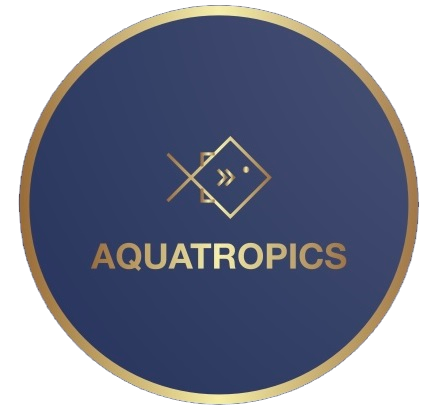

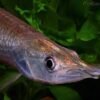
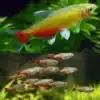
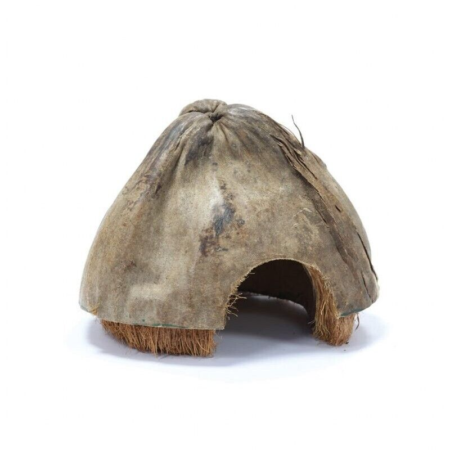

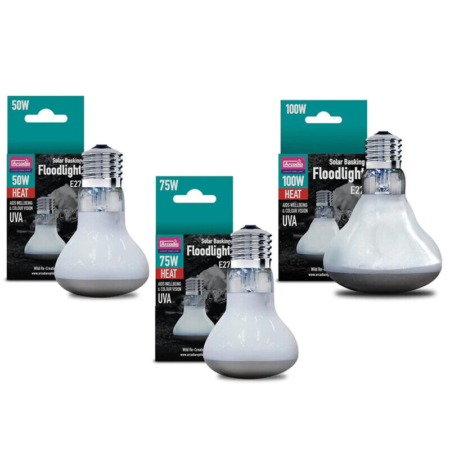






Emily Carter (verified owner) –
I recently added the Spotted Headstander (Chilodus punctatus) to my South American tetra collection, and I couldn’t be happier! These fish are not only stunning with their vibrant colors and unique patterns, but they also have such a graceful presence in the tank. After about two months of observing their interactions and behavior, I can confidently say they thrive in a well-planted aquarium. They love to school together, which adds a lively dynamic to my setup. I initially had some concerns about their compatibility with my other fish, but they’ve proven to be peaceful and social.
One thing to note is that they prefer a bit of space to swim freely, so a larger tank is ideal if you want to keep a group. I’ve noticed they also enjoy having hideouts to feel secure. Compared to other tetras, the Spotted Headstander stands out not just for its looks but for its engaging behavior.
If you’re looking to brighten up your tank with tropical fish that exhibit unique behaviors, I highly recommend these beauties! They certainly contribute to a lively and healthy aquarium environment. Just make sure to provide them with a few plants and decorations for enrichment!
Emily Sanders (verified owner) –
I recently added the Spotted Headstander (Chilodus punctatus) to my community tank, and I couldn’t be happier! After just two weeks, they’ve settled in beautifully, showcasing their unique, graceful swimming style. Unlike some other tropical fish I’ve kept, these guys are incredibly active and social, loving to explore their surroundings. They get along well with my other community fish, which is a huge plus! I also appreciate their hardiness, which makes them ideal for beginners; they’ve been a joy to care for.
One thing to note is that they do enjoy a bit of space to swim, so make sure your tank is adequately sized. I recommend at least a 20-gallon tank for a small group, as they thrive when they have room to roam. If you’re looking for vibrant tropical fish that add life to your aquarium, the Spotted Headstander is a fantastic choice. I will definitely be purchasing more in the future, and I highly recommend them to anyone wanting to enhance their South American tetra collection!